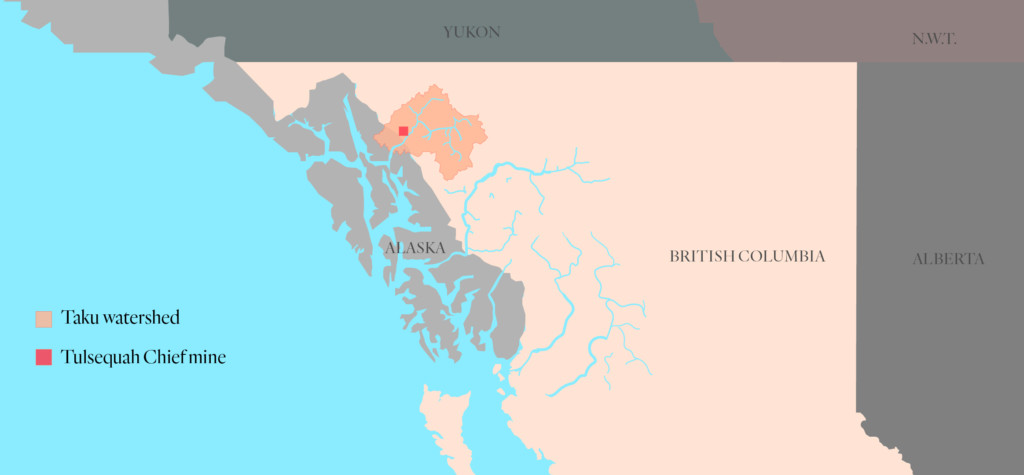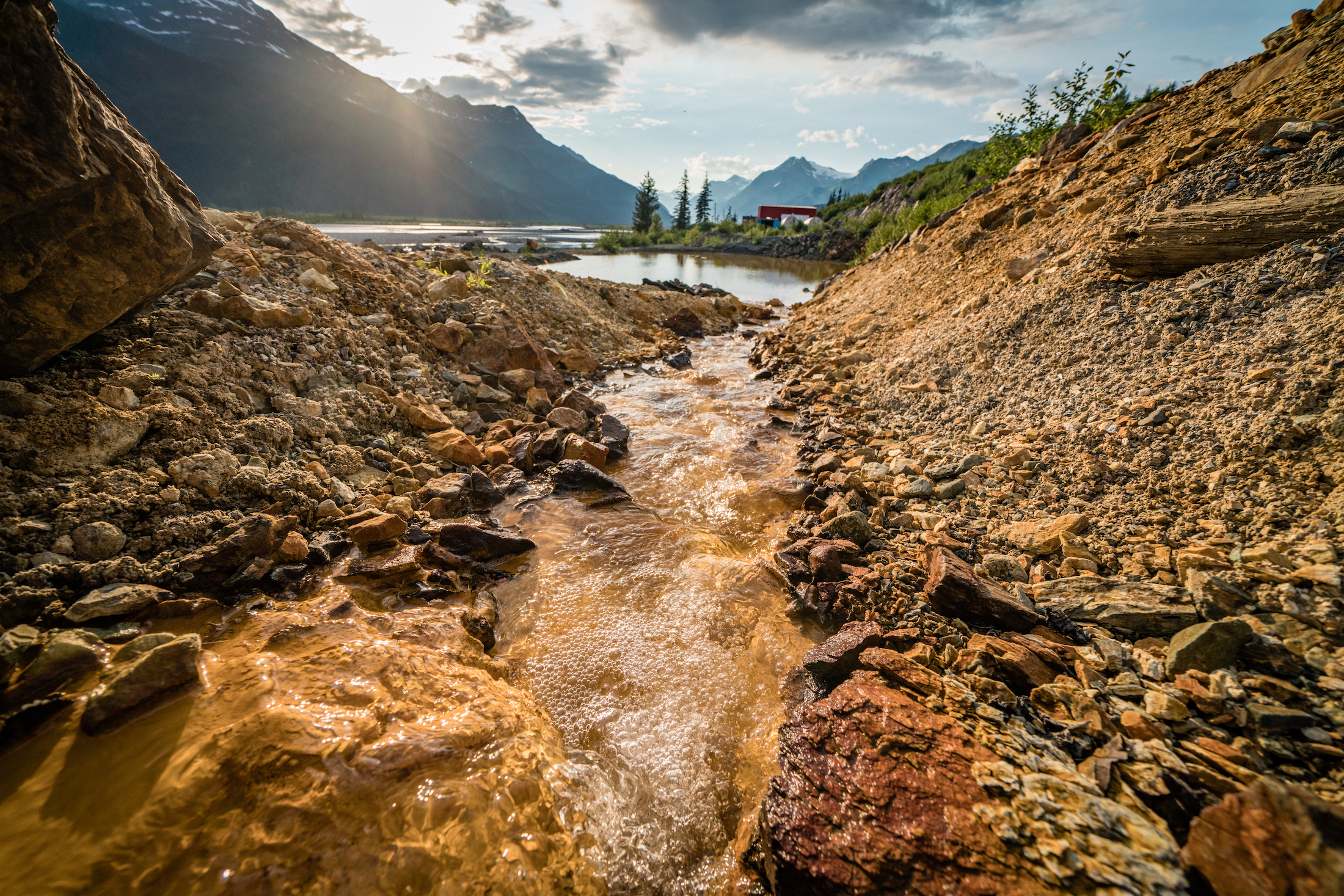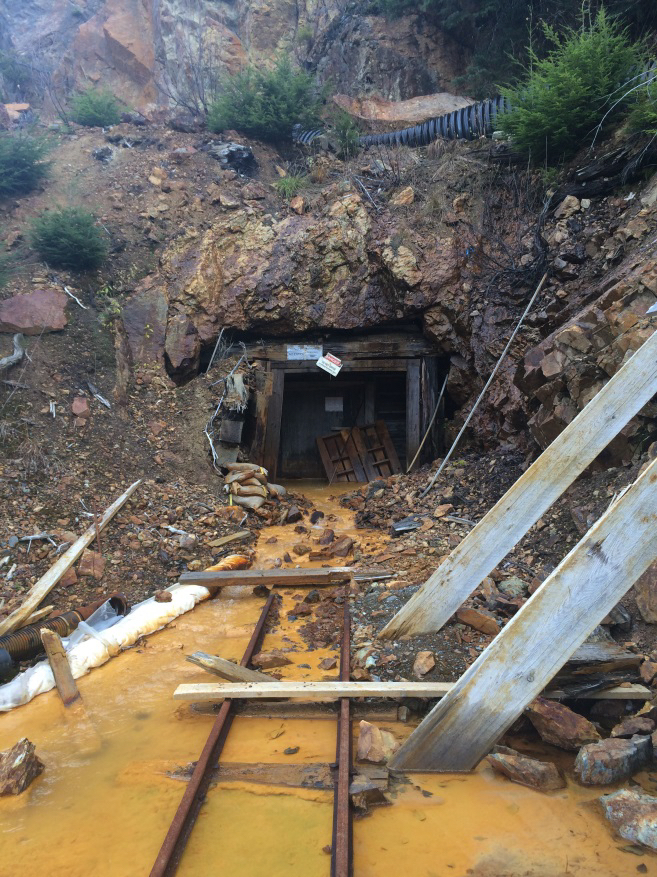
Water determines the Great Lakes Region’s economic future
Climate change, geopolitics and business opportunities power a blue economy
From above, the closed Tulsequah Chief mine in northwest B.C. seems small as it sits by the Tulsequah River a few kilometers from the waterway’s confluence with the Taku River.
But up close, the site is an “open, oozing wound,” said Guy Archibald, executive director of the Southeast Alaska Indigenous Transboundary Commission. “There’s bright orange water running down the hill, running into this huge pond of bright orange water that just overflows into the river.”
The mine has been leaching untreated waste into the salmon-bearing Taku River for decades. But, after years pushing for action from environmental groups and communities across the watershed, a remedy might be on the way.
This month, the receivership of Tulsequah Chief Mine officially expired after six years — removing a roadblock to starting the cleanup process.
“This is very good news,” Taku River Tlingit First Nation spokesperson Charmaine Thom said in a press release. “The receivership hindered B.C.’s efforts to stop the pollution from Tulsequah Chief and clean up the site and was the major procedural hurdle to clear. Now, our First Nation and Alaska Native Tribal governments call on B.C. to start taking specific steps toward turning its commitments into action.”
The beleaguered mine was owned by Chieftain Metals, which went into receivership (a process for creditors to recoup outstanding debts) in 2016 after defaulting on a loan. An accounting firm was brought in to manage Chieftain’s assets and try to sell the mine to make up for some of the losses, but no buyer was found before the August 11, 2022, deadline, ending the receivership process.
That means the provincial government will be responsible for figuring out the estimated $48.7 million cleanup job left behind by over six decades of failed mining projects.
Tulsequah Chief mine is in Taku River Tlingit Territory — about 100 kilometres south of Atlin near the Alaska-B.C. border. The mine first opened as a copper, lead, zinc, silver and gold mine in 1951 by Cominco, now known as Teck Resources, and closed in 1957. In the decades that followed, various companies tried to restart operations without success. Two companies, including the most recent mine owners, Chieftain Metals, went into receivership.
With the receivership process over, the province is expected to answer questions environmental groups and Indigenous communities have been asking for years: how will the province fund the cleanup? How will it address ongoing mine waste drainage at the site? When will the cleanup start?
“It’s been a long, long, long process,” Archibald said. “I’m thinking it’s going to be still another five years down the road before they get around to cleaning it up — and that’s unfortunate. But I’m happy it’s advancing, finally.”
Archibald’s organization, the Southeast Alaska Indigenous Transboundary Commission, represents 15 sovereign Tribal nations in Southeast Alaska, and is one of many involved in pushing for the cleanup.

“The receivership has really hindered B.C.’s ability to take over the mine and clean it up,” said Chris Zimmer, Alaska campaign director with Rivers Without Borders. Despite that, the province could still be doing more to prepare for the imminent cleanup, Zimmer said.
The dissolution of Chieftain Metals as a company should happen this October and is the final formality before B.C. can completely take over the mine, he said. In the meantime, Zimmer said the province should be completing studies, preparing a funding strategy and updating the draft remediation plan to ensure the ministry is ready to go in a few months. “The province can now move more aggressively to clean up the mine. So this is very good news.”
Downstream from the site, Breanna Walker, a Juneau resident and campaign director of Salmon Beyond Borders, said that she’s looking forward to the cleanup process. She’s hopeful that remediation plans will be a collaborative process that involves First Nations, Tribes and communities living downstream.
“It’s long past time for all of the people that are connected to these places, and in particular Taku, to have a seat at the table,” Walker said.
B.C.’s Ministry of Mines declined an interview request to share details about the remediation and its funding strategy. In an email a spokesperson wrote they are committed to working with the Taku River Tlingit and “engaging with stakeholders” on cleanup and closure of the site. In 2020, the ministry released a conceptual closure plan based on workshops with the Taku River Tlingit, Teck Resources and the Alaska Department of Natural Resources. The ministry said it will continue with work already in progress to ensure the stability of the site, repair stream crossings and monitor water quality.
Monitoring of the site will last decades, if not hundreds of years, Archibald said. The estimated cost of monitoring is over $1 million a year, according to the conceptual 2020 Closure and Remediation Plan prepared for the B.C. government. That’s in addition to the $48.7 million in cleanup costs.
There are only two possible sources of money for the multi-million project, Zimmer said: taxpayer dollars or past owners of the site.
Rusty, acidic water has been draining from the mine into the salmon-bearing watersheds in the territory of the Taku River Tlingit First Nation since the mine opened in the early ’50s.
There was a brief respite from pollution when a water treatment plan was built, but the plant only operated for a few years before Chieftain said it could no longer afford to operate it.

The idea that polluters should pay to clean up any mess they leave behind is generally accepted across Canada. B.C. has a polluter-pay principle, which is meant to ensure “those who are responsible for spills are also responsible for cleaning them up.” But cleanup costs are often underestimated and problems like acid rock drainage can require indefinite monitoring. And, often mining companies aren’t forced to pay for the full costs of cleanup, according to a report by BC Mining Law Reform.
“Despite the polluter pay policy, you can’t get a bankrupt polluter to pay,” Zimmer said.
The complicated receivership process is, “indicative of how mining companies are allowed to hide their responsibility,” Archibald said. “They have a unique responsibility to try to protect the environment and clean up their mess, but they can hide behind bankruptcy laws for years and years and years.”
But there is another avenue the province could pursue to cover the costs.
The province has the authority to ask previous mine owner, Teck Resources, to pay for cleanup under section 45 of the Environmental Management Act. So far, Teck Resources has voluntarily given more than $3 million for the cleanup.
“Teck Resources is the original owner and under the law there, they’re clearly still liable,” Zimmer said.
Teck Resources recently reported record-breaking profits for the fourth consecutive quarter with $1.8 billion in adjusted profits. Those profits are up from $339 million during the same period last year, an increase of more than 430 per cent.
Teck Resources declined an interview request and did not answer a list of questions from The Narwhal. In an email statement Teck stated it has, “a long history of working to remediate sites and is committed to working collaboratively to protect the environment.”
In an email a Ministry of Mines spokesperson said, “the Province is committed to holding all past and present owners of the Tulsequah Chief Mine accountable to address cleanup of the site.” It did not answer specific questions about Teck Resources.
Tulsequah Chief Mine is just one of many abandoned mines in B.C. Relatively speaking, it’s a “baby mine,” according to Walker of Salmon Beyond Borders. “The Tulsequah Chief operated for just a few years and moved a minuscule portion of rock, compared to the mines currently in operation or proposed,” she added in an email.
The ministry doesn’t have enough money to cover the possible cleanup costs for mines across the province. As of last March, the ministry had $2.31 billion in securities for major mines to cover $3.45 billion in possible costs, according to an industry estimate — a shortfall of $1.14 billion dollars.
An audit by the Office of the Auditor General of B.C. found that the ministry is narrowing that difference while also noting that there are 90 abandoned mines across the province that could require more cleanup.
Recent changes in B.C. mining policy mean the ministry can ask new mines to provide financial security deposits to ensure taxpayers don’t end up with cleanup costs. It also requires a bond to operate and maintain water-treatment plants.
But this policy is at the discretion of the ministry and doesn’t cover unexpected disasters or when a mine goes bankrupt.
The Narwhal asked the ministry what actions are being taken to fund and clean up old mine sites, like the Tulsequah Chief, which fall outside the new mining reclamation policy but they did not respond to our list of questions.
Zimmer believes it’s time that governments hold the corporate officers and directors of mining companies personally responsible, either through criminal charges or fines.
“It would send a message” that we’re going to hold the companies and the people that run them accountable, Zimmer said.
To address the ongoing acid draining from the mine, the main proposed strategies don’t involve water treatment and focus on diluting the discharge, said Zimmer. “All that metal has to go somewhere; and it’s going to end up in the fish, it’s going to end up in the sediment, it’s going to end up going downstream.”
The Alaskan border is within 30 kilometers from the Tulsequah Chief mine. The capital city Juneau, sits downstream and state legislators there have been calling for more action from the B.C. government.

This March, Alaska state legislators wrote to Secretary of State Anthony Blinken about their concerns over the cleanup. Despite B.C.’s draft remediation plan, legislators said there was still not enough information about, “the status, funding and timeline of that plan.” They urged for Blinken to hold the Canadian government accountable to their commitment to clean up the site.
The Ministry of Mines told The Narwhal they are committed to engaging with Alaska and pointed to their statement of cooperation with the state.
“It’s been a point of concern and frustration for community members in Juneau, as well as across the region throughout southeast Alaska,” said Walker.
The Taku River Tlingit Territory covers over 40,000 square kilometers in what is now known as B.C., Yukon and Alaska. “The Taku River is one of the biggest salmon producers in the region,” Archibald said. But people are avoiding fishing downstream from the mine because of fears the fish could be contaminated.
The Taku River Tlingit First Nation is working towards designating the Tulsequah Valley as an Indigenous Protected and Conserved Area, according to 2020 court documents.
In their joint statement about the receivership ending, the Taku River Tlingit and Alaska Tribes called on the BC government to revoke Chieftain’s mine permits and develop a specific plan for funding clean up and closure as soon as possible.
Archibald hopes B.C. continues to work with the First Nation on the remediation and long-term monitoring of the site. He’ll be waiting to see what happens after the dissolution of Chieftain Metal’s assets in October as the mining claims can then revert back to Crown.
It’s taken over 60 years to take small steps towards cleaning up the Tulsequah Chief mine, Walker said. And it’s not the only mine that will have to be remediated across the province. Meanwhile, exploration continues in the watershed.
“It’s been a long time coming,” Walker said. “This is only the beginning of the larger conversation of the future of the Taku watershed, which is an incredible, beautiful, wild salmon stronghold that is shared between two countries, and has been stewarded for thousands of years by Tribes and First Nations on both sides of the border.”
Updated on Aug. 31, 2022, at 10:16 a.m. PT: This story has been updated to include a joint statement from the Taku River Tlingit First Nation, the Douglas Indian Association and the Southeast Indigenous Transboundary Commission, which came out after publication.
Updated on Aug. 23, 2022, at 6:05 p.m. PT: This story has been updated to correct the name of the conservation organization Rivers Without Borders, which was earlier misidentified as Rivers Beyond Borders.
Updated on Aug. 29, 2022, at 12:16 p.m. PT: A previous version of this story stated that mining continues in the Taku watershed. The story has been updated to clarify that there is some exploration but no current mining activities and that Tulsequah Chief mine one of many that will have to be remediated across the province
Get the inside scoop on The Narwhal’s environment and climate reporting by signing up for our free newsletter. On a warm September evening nearly 15...
Continue reading
Climate change, geopolitics and business opportunities power a blue economy

10 billion litres of sewage are dumped into Winnipeg’s lakes and rivers each year. Some...

Court sides with Xatśūll First Nation, temporarily halting Mount Polley mine waste expansion
